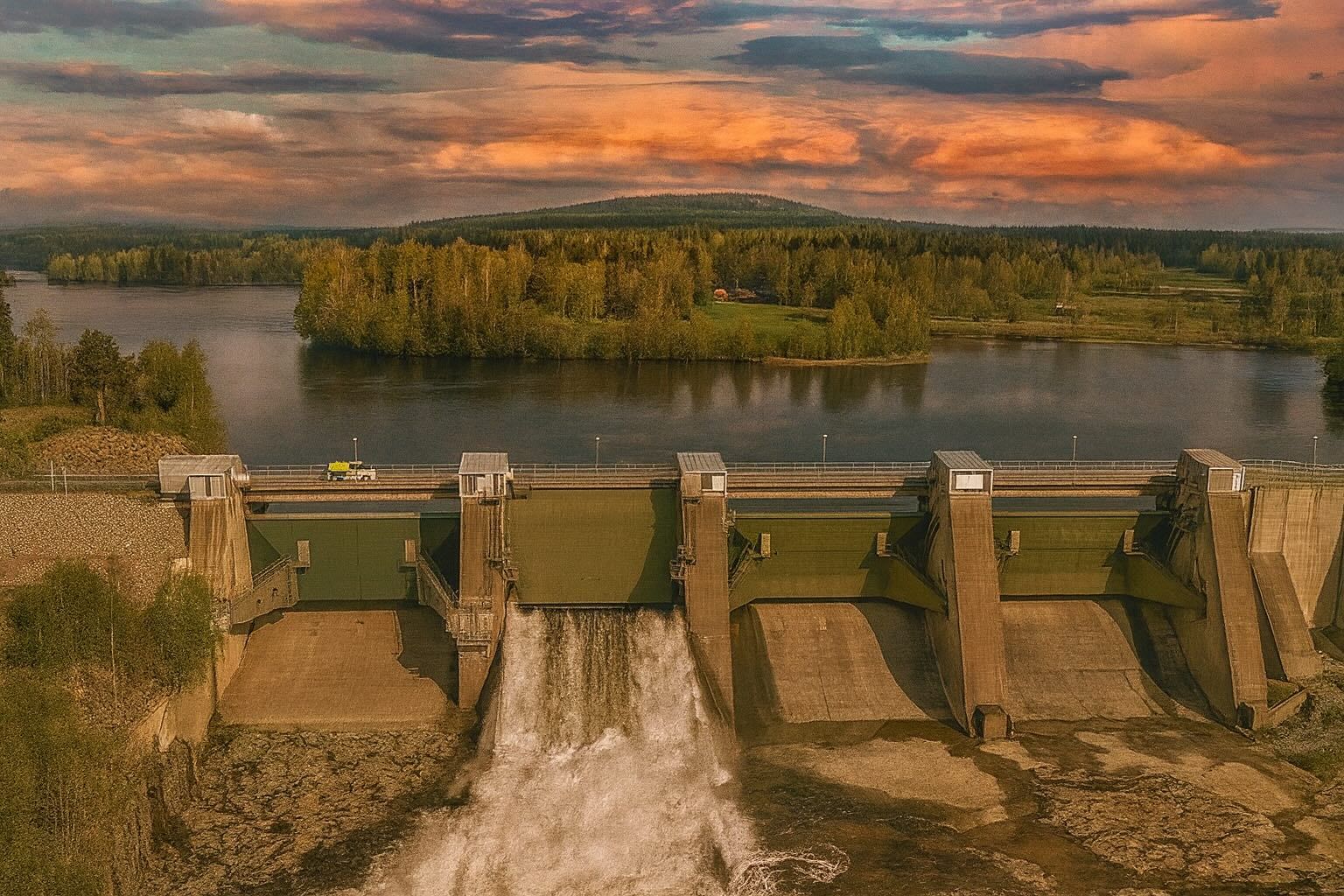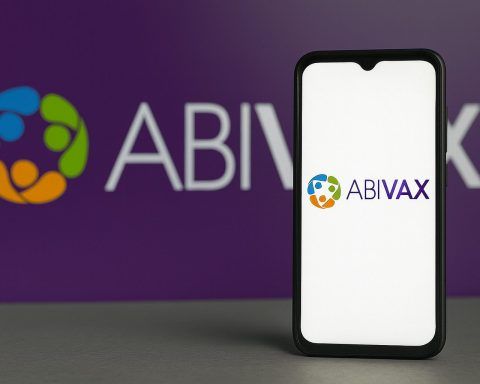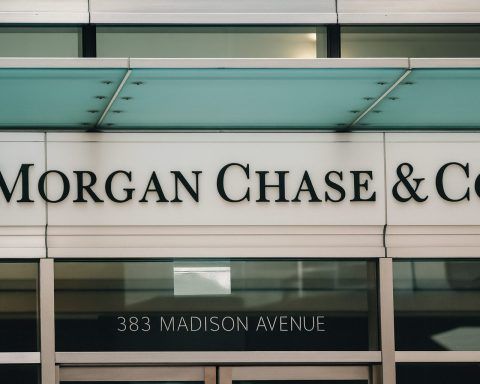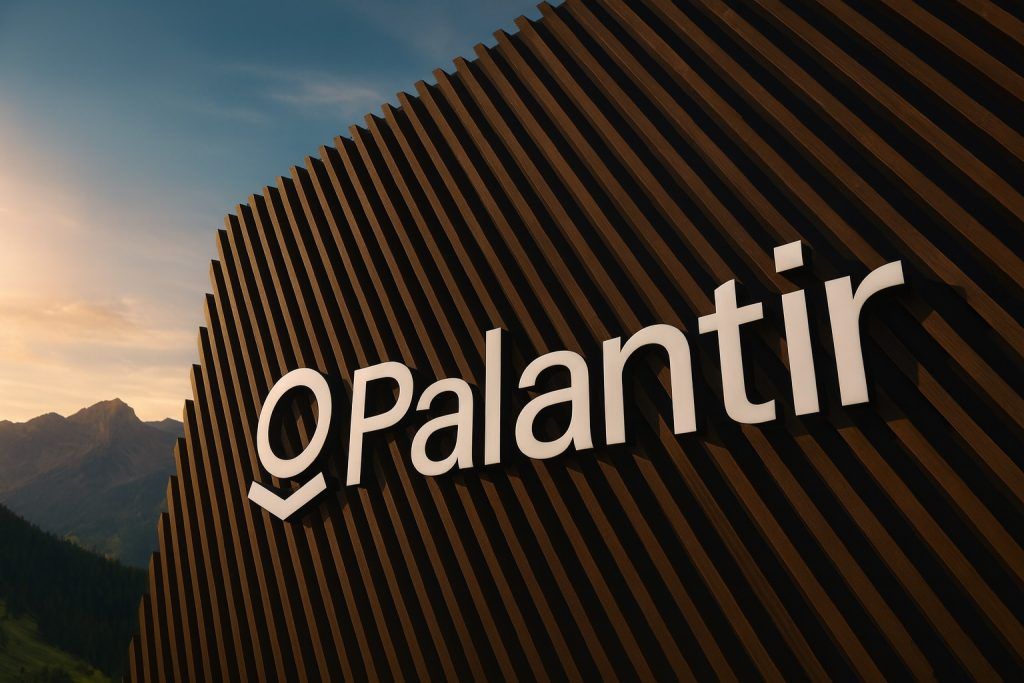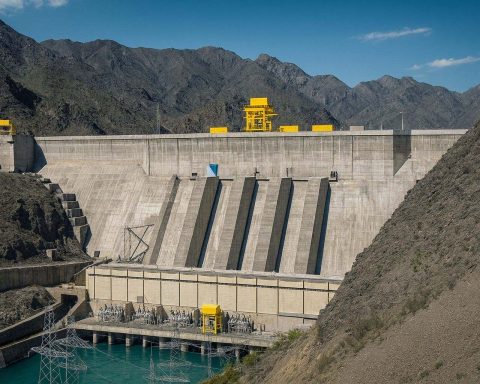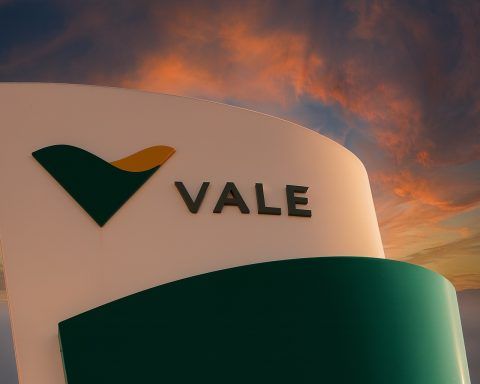- World-First Green Dam Gate: Swedish energy company Vattenfall is installing the world’s first dam gate made from fossil-free steel – 120 tonnes of “green” steel from SSAB – at its 603 MW Stornorrfors hydropower station by 2028 [1] [2]. This massive gate (21 m wide by 11 m high) will be the largest steel component ever built with near-zero CO₂ emissions in its iron production [3] [4].
- HYBRIT Technology Slashes CO₂: The steel is produced using HYBRIT – a groundbreaking hydrogen-based ironmaking process developed by SSAB, Vattenfall, and LKAB. By using fossil-free electricity and hydrogen instead of coal, HYBRIT virtually eliminates carbon emissions from steelmaking [5]. The dam gate’s steel has an estimated carbon footprint ~200 tons lower than conventional steel [6] [7], demonstrating a major climate benefit.
- Vattenfall’s Net-Zero Push: Vattenfall says the fossil-free dam gate is a “big step” in its strategy to become fossil-free across its value chain by 2040 [8]. The new gate will replace an old one during routine maintenance, extending the life of this vital carbon-free hydropower source by 100 years [9]. “Vattenfall is committed to fossil-freedom… net-zero by 2040,” affirmed Lovisa Fricot Norén, head of Vattenfall’s Nordic hydropower [10].
- Green Steel Lifts SSAB’s Outlook: SSAB, the steelmaker, has seen its stock surge ~38% in 2025 [11] amid optimism about its green steel leadership. Analysts are raising forecasts: Danske Bank recently upgraded SSAB with a SEK 70 price target [12], and JPMorgan sees SEK 73 (~17% above current levels) as achievable [13]. Experts at AlphaValue/Baader Europe also view SSAB’s fossil-free pivot as boosting its long-term prospects [14]. Investors cheered the Vattenfall deal – SSAB’s shares ticked up on the news [15].
- Broader Impact – A New Era for Steel & Energy: This project is more than a one-off novelty. It showcases that heavy infrastructure can be built with low-carbon materials, a point not lost on regulators. EU authorities are considering green public procurement rules, which could give SSAB’s HYBRIT steel an edge in future projects [16]. Full commercial scale-up is expected by 2028–2029 [17], potentially ushering in a new era of fossil-free steel in construction, energy, and even automotive manufacturing. Vattenfall, for its part, is pursuing fossil-free energy on multiple fronts – from pioneering green steel to exploring new nuclear reactors (it recently shortlisted GE and Rolls-Royce small modular reactors) [18] – signaling an industry-wide shift toward climate neutrality.
Dam Gate Goes Green: Vattenfall & SSAB’s World-First Collaboration
In a landmark for clean technology, Vattenfall has ordered 120 tonnes of fossil-free steel from SSAB to build a replacement dam gate at the Stornorrfors hydropower plant in northern Sweden [19]. Announced in late October 2025, the agreement marks the world’s first attempt to use virtually carbon-neutral steel in a large-scale infrastructure component. “Vattenfall and SSAB are now taking a big step forward in the development of fossil-free value chains,” said Lovisa Fricot Norén, CEO of Vattenfall’s Nordic hydro power unit [20]. The project deepens a partnership formed in 2023 between the power company and steelmaker to accelerate the fossil-free transition [21].
What makes this steel “fossil-free”? SSAB’s specialty metal is created without coal or other fossil fuels in the ironmaking process. Instead, it uses the proprietary HYBRIT (Hydrogen Breakthrough Ironmaking Technology) process jointly developed by SSAB, iron ore miner LKAB, and Vattenfall [22]. In HYBRIT, iron ore is reduced using hydrogen gas (H₂) rather than coke, producing water vapor instead of carbon dioxide. The resulting “sponge iron” is then melted in an electric arc furnace powered by fossil-free electricity [23]. This eliminates most CO₂ emissions – a game-changer given that conventional steelmaking accounts for an estimated 7–9% of global CO₂ emissions [24]. SSAB estimates that shifting to fossil-free steel could cut Sweden’s total carbon emissions by about 10% [25], underlining the huge climate stakes.
The Stornorrfors dam gate will be a proof of concept on a grand scale. At 21 meters wide and 11 meters tall, it will be the largest steel part ever made with near-zero fossil carbon emissions [26] [27]. The HYBRIT-produced steel for the gate comes from SSAB’s pilot plant in Luleå, which has been testing hydrogen-reduced iron since 2021 [28]. By using this steel, the gate’s production will emit ~200 fewer tons of CO₂ than if it were built from regular steel [29] [30] – roughly equivalent to the annual emissions of ~45 gasoline cars. Thomas Hörnfeldt, SSAB’s VP of Sustainability, called it “an important step in our joint commitment to reduce carbon emissions… showing what we can achieve to reduce the climate footprint throughout the value chain” [31].
A Milestone in Vattenfall’s Fossil-Free Future
For Vattenfall, the green steel dam gate isn’t just a pilot project – it’s a statement about the company’s future. The Stockholm-based utility (owned by the Swedish state) has branded its strategy as working toward “fossil freedom,” aiming for net-zero emissions by 2040 across its entire value chain [32]. That includes not only producing fossil-free electricity (Vattenfall is a major wind, hydro, and nuclear generator) but also decarbonizing the materials and fuels it uses.
Replacing a hydropower dam gate might seem like routine maintenance, but doing it with fossil-free steel “is a logical next step” in Vattenfall’s climate strategy [33]. Hydropower is already a zero-operational-emission energy source; by using green steel in the infrastructure, Vattenfall further shrinks the lifecycle footprint of its clean energy projects. “This is also an important part of extending the lifetime of [our] fossil-free hydropower for the next hundred years,” noted Lovisa Fricot Norén [34]. In fact, the Stornorrfors station – Sweden’s largest by annual production – has been running since 1958 [35]. Installing a new high-tech gate will ensure it can keep reliably churning out renewable electricity for decades to come.
Vattenfall’s embrace of fossil-free steel goes hand-in-hand with its other green initiatives. The company is aggressively expanding in offshore wind (it recently won rights to a major subsidy-free wind farm in Germany [36]) and is even revisiting nuclear power to meet future demand. Just this summer, Vattenfall shortlisted GE Vernova and Rolls-Royce as potential suppliers of new small modular reactors (SMRs) for Sweden [37] – a significant pivot back to nuclear, driven by the need for reliable, 24/7 carbon-free energy. “Sweden’s Vattenfall [has] shortlisted GE Vernova’s SMR design (and a Rolls-Royce rival) for a major new reactor order,” Reuters reported, highlighting the utility’s multi-pronged approach to hit climate targets [38]. From green steel hydropower upgrades to next-gen nuclear, Vattenfall is investing across the board to eliminate fossil fuels from power generation.
Investor Reactions: Green Steel as a Market Catalyst
The Vattenfall-SSAB dam gate deal also underscores a broader trend: decarbonization is becoming big business in heavy industry. SSAB’s stock price has been on a tear this year, reflecting investor enthusiasm for its fossil-free steel initiative. The company’s A-shares in Stockholm have climbed roughly 35–40% year-to-date [39], vastly outperforming many traditional steel rivals. News of the Vattenfall order was seen as validation of SSAB’s technology and market potential – the stock rose nearly 2% around the announcement [40].
Financial analysts are increasingly optimistic that SSAB can turn its green steel leadership into real profits. Several investment banks boosted their outlook on SSAB following its Q3 results and the progress on HYBRIT. For example, Danske Bank upgraded the stock to a Buy with a SEK 70 target (about $6.30 USD), while JPMorgan reiterated an Overweight rating with a SEK 73 target [41]. Those targets imply solid upside from the current share price (~SEK 60). “AlphaValue/Baader Europe [is] upbeat on SSAB’s prospects amid Q3 results [and] EU’s steel safeguards,” noted an October 27 market brief [42], signaling confidence in the company’s direction. SSAB’s pivot to fossil-free steel is not just an environmental story but a strategic one: it’s positioning to supply high-value green steel as demand rises and carbon regulations tighten.
There is good reason to believe that “green premium” steel could command higher margins in the near future. The European Union is moving toward stricter carbon policies – including the new Carbon Border Adjustment Mechanism (CBAM) on imports and potential rules favoring low-carbon materials. As trade publication Eurometal reports, EU authorities have signaled that sustainability criteria may soon be built into public procurement mandates [43]. In plain English: governments could start requiring the use of low-CO₂ building materials for infrastructure projects. If that happens, SSAB’s early mover advantage with HYBRIT steel could translate into a lucrative market niche. Demonstrating the applicability of low-carbon steel to large infrastructure could advantage SSAB’s HYBRIT steel in this emerging market [44], Eurometal observes. In anticipation, SSAB is scaling up – it plans to have full commercial production of fossil-free steel by 2026–2030, with HYBRIT technology expected to hit industrial scale around 2028 [45].
Toward a Fossil-Free Metals Future
Beyond this single dam gate in Sweden, the implications of Vattenfall’s project are global. It offers a glimpse of a future where green steel and green energy go hand-in-hand. Imagine skyscrapers, bridges, wind turbines, and electric vehicles built with steel that no longer carries a massive carbon footprint. The Stornorrfors gate is a relatively small step – 120 tonnes of steel, one hydropower station – but it’s symbolically huge. It tells heavy industry skeptics that fossil-free steel is not just a lab experiment or a PR stunt; it’s ready to tackle giant, real-world applications.
The energy sector and steel sector are often seen as hard-to-decarbonize industries. Here we see them solving each other’s problems: fossil-free electricity (from Vattenfall’s hydropower) enables fossil-free steelmaking, and that green steel in turn reinforces the clean energy infrastructure. “With forward-thinking partners like Vattenfall, we continue to lead the transformation of the steel industry,” said SSAB’s Thomas Hörnfeldt [46], emphasizing the collaborative effort. Industry experts note that partnerships between steelmakers, power companies, and miners (like the HYBRIT trio) are crucial to scale up these solutions.
Of course, challenges remain. Producing sponge iron with hydrogen is currently more expensive than using coal, and scaling up to millions of tonnes will require enormous renewable power supply and investment in new furnaces. Customers must also be willing to pay a “green premium” for lower-emissions steel – something automakers like Volvo and Mercedes have tentatively agreed to in pilot purchases. But momentum is building. Market analysts estimate the global green steel market could grow to $15–20 billion by 2030 as industries race to cut CO₂ [47] [48]. Every successful project, like Vattenfall’s dam gate, brings that vision closer.
As 2025 draws to a close, Vattenfall’s experiment at Stornorrfors stands out as a beacon of industrial innovation. A century ago, building a giant hydropower dam symbolized progress and electrification. Today, rebuilding part of it with fossil-free metal symbolizes the next revolution: sustainable industry and a circular, low-carbon economy. In the coming years, watch for more “firsts” like this – and if Europe’s regulators have their way, expect green steel to move from firsts to the new normal.
Sources: Vattenfall Press Release [49] [50]; SSAB Press Release [51] [52]; Renewables Now [53] [54]; Energy-Pedia [55] [56]; Eurometal [57] [58]; MT Newswires/MarketScreener [59] [60]; Reuters/TS² [61].
References
1. www.energy-pedia.com, 2. www.energy-pedia.com, 3. www.energy-pedia.com, 4. www.energy-pedia.com, 5. www.energy-pedia.com, 6. www.energy-pedia.com, 7. www.energy-pedia.com, 8. www.energy-pedia.com, 9. www.energy-pedia.com, 10. www.energy-pedia.com, 11. www.marketscreener.com, 12. www.marketscreener.com, 13. www.marketscreener.com, 14. www.marketscreener.com, 15. www.marketscreener.com, 16. eurometal.net, 17. eurometal.net, 18. ts2.tech, 19. www.energy-pedia.com, 20. www.energy-pedia.com, 21. www.energy-pedia.com, 22. eurometal.net, 23. eurometal.net, 24. www.energy-pedia.com, 25. www.energy-pedia.com, 26. www.energy-pedia.com, 27. www.energy-pedia.com, 28. www.energy-pedia.com, 29. www.energy-pedia.com, 30. www.energy-pedia.com, 31. www.energy-pedia.com, 32. www.energy-pedia.com, 33. www.energy-pedia.com, 34. www.energy-pedia.com, 35. www.energy-pedia.com, 36. reglobal.org, 37. ts2.tech, 38. ts2.tech, 39. www.marketscreener.com, 40. www.marketscreener.com, 41. www.marketscreener.com, 42. www.marketscreener.com, 43. eurometal.net, 44. eurometal.net, 45. eurometal.net, 46. www.energy-pedia.com, 47. ts2.tech, 48. eurometal.net, 49. www.energy-pedia.com, 50. www.energy-pedia.com, 51. eurometal.net, 52. www.energy-pedia.com, 53. renewablesnow.com, 54. renewablesnow.com, 55. www.energy-pedia.com, 56. www.energy-pedia.com, 57. eurometal.net, 58. eurometal.net, 59. www.marketscreener.com, 60. www.marketscreener.com, 61. ts2.tech
